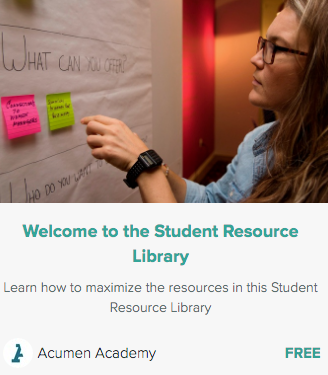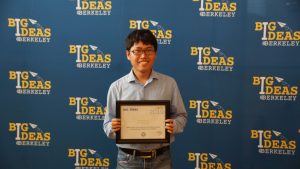Providing Accessible Medical Care through Low-Cost Fracture Detection
By Emily Denny
![]() Treating bone fractures in the developing world is increasingly difficult due to the lack of x-ray accessibility. Emily Huynh, a senior at UC Berkeley studying Bioengineering, thought: if bone fractures were diagnosed and treated properly in an affordable way, large populations of people could avoid the chronic pain, disability, and socioeconomic disadvantage that mistreated fractures cause. This past spring, Huynh and her team won third place in Big Ideas’ Hardware for Good category for a medical device that provides orthopedic care in underdeveloped countries and remote settings called Fractal.
Treating bone fractures in the developing world is increasingly difficult due to the lack of x-ray accessibility. Emily Huynh, a senior at UC Berkeley studying Bioengineering, thought: if bone fractures were diagnosed and treated properly in an affordable way, large populations of people could avoid the chronic pain, disability, and socioeconomic disadvantage that mistreated fractures cause. This past spring, Huynh and her team won third place in Big Ideas’ Hardware for Good category for a medical device that provides orthopedic care in underdeveloped countries and remote settings called Fractal.
Big Ideas spoke with Huynh to learn about the inspiration behind the idea, what she and her team are currently working on, and how Fractal can create a positive impact to communities in the developing world.
Q: How is Fractal a solution to the growing numbers of untreated and mistreated bone fractures in the developing world?
A: There is about one orthopedic surgeon for 700,000 people in Nigeria — that’s a long waiting room. Despite the fact that the number of mistreated fractures is growing in developing countries, the number of professionals trained to treat these fractures isn’t growing with it. If bone fractures are not treated properly issues like bone-shortening, chronic pain, infection, and in an extreme case amputation can occur.
Fractal allows a clinician — one who may not have five years of training in orthopedic residency, but are familiar with the medical environment to triage patients — to rapidly diagnose and treat patient’s fractures properly, and accelerate recovery. By providing developing countries with an inexpensive, accurate tool for diagnosing and monitoring of bone fractures, we will facilitate better orthopedic care and reduce the incidence of mistreatments, misdiagnoses, and the ensuing complications.
Q: How is Fractal’s technology different than traditional technologies used to diagnose bone fractures?
A: The most common technology is x-ray, but abroad this can be inaccessible because x-ray is expensive to buy and maintain. A common alternative to x-ray is portable ultrasound which is relatively cheap, but it is hard to read, especially for fractures. Fractal fills this gap: it’s inexpensive like ultrasound, but is quantifiable and easy to use.
Fractal leverages and automates existing solutions in order to detect bone fractures without the use of imaging. We are basing the technology off of a technique physicians used before x-ray and ultrasound was invented called auscultatory percussion. It’s the same idea as when a doctor places a stethoscope on your back and asks you to breathe in. We are applying that same kind of “apply an impulse and listen to what you hear” methodology to the leg. By sending controlled audio waves through the bone, Fractal records and analyzes the sounds physicians listen for during bone auscultation, eliminating the chances of misdiagnosis that may occur without the proper equipment.
Q: How can you ensure Fractal is trusted in remote communities?
A: For patients in remote areas of many developing countries, going to urban care centers where people can be treated properly, can sometimes take days of walking. So, traditionally people living in these remote areas depend on bonesetters to treat a fracture. We do not want to upend or disagree with these trusted bonesetters, but to facilitate their care. If we are able to gain the trust of local caretakers, I think that Fractal could become a very helpful tool in treating larger populations of people.
Q: Through a partnership with The Lemelson Foundation, Fractal and other Big Ideas applicants in the Hardware for Good category participated in environmental responsibility workshops. How do you hope to implement sustainability into Fractal’s prototype?
A: Big Ideas’ Hardware for Good category was really interesting because sustainability is something innovators don’t really think about because we are so focused on how our product is going to work, how we are going to market it and how we are going to sell it.
The body of Fractal is printed with PLA (polylactic acid) which can be melted down and recycled. We are also hoping to create a service where if a device is broken it can be sent back to us. Once we receive the broken device we can repurpose it for the parts that don’t work. This will extend the device’s end of life, ultimately allowing us to limit our waste.
Q: How has your own academic interests led to the development of Fractal?
A: When I came to Berkeley I structured my coursework around learning how to build medical devices. I learned about hardware, how to build it, how to write the code so it can communicate, and how to do hands-on prototyping. Justin Krogue is my partner for Fractal. He is a fifth year orthopedic resident at UC San Francisco (UCSF) who rotates at San Francisco General Hospital (SFGH). When Krogue came to me with this idea, I ran with it. I thought Fractal tied my Bioengineering degree and skills together in a way that addressed social concerns.
Q: How have mentors and medical industry experts contributed to the development of Fractal?
A: Mentorship is one of the most important things that comes from Big Ideas. I was connected with Jeffrey Lu who won Big Ideas a few years ago. He made a big difference to my proposal because he is still in the start-up phase himself and provided significant insight from his experience to identify areas of improvement for both the proposal and the device itself. He helped me envision how to create a device that can be successful and I couldn’t have asked for a better mentor.
Dr. Nirmal Ravi from eHealth Africa has experienced how developing countries such as Nigeria, Tanzania, and India have an inadequate healthcare infrastructure due to a lack of personnel and high equipment and maintenance costs, making it difficult for all communities access appropriate care. He has helped us get a better understanding of how we should market to developing countries. A lot of people reach out to developing countries thinking they can’t help themselves. We wanted to ensure that we assimilate with these countries and work into their culture to try and help solve this problem.
Q: What is your vision for Fractal over the next few months and what do you look forward to the most as you continue with Fractal?
A: Right now we are trying to go to a couple conferences to gain exposure and see if anyone else in the academic community has opinions and advice on the Fractal. We also currently collecting data at UCSF and SFGH on more tibia and hip fractures and of course looking for funding. In the long term, we hope to partner with Muhimbili Orthopaedic Institute in Tanzania so we can send our devices to become a part of a global clinical trial.
As my team and I continue to take these next steps, I look forward to seeing how Fractal can help just one patient and enable them to live a normal life. I am excited to see how Fractal can positively impact a community.
 In August, Big Ideas hired an environmental design fellow to support the program,
In August, Big Ideas hired an environmental design fellow to support the program,  A: In medicine, if you don’t follow the rules of hierarchy, especially as a woman and as an underrepresented minority, you are going to be oppressed. That’s the sad reality. So I saw that I could respond in two ways: I could keep fighting the system and continuously get frustrated with it; or I could lean in a little, while also speaking out. I soon realized that I couldn’t reach my full potential as a surgeon; I was cast out because I fought back. But I learned from it, which is precisely why I changed my approach.
A: In medicine, if you don’t follow the rules of hierarchy, especially as a woman and as an underrepresented minority, you are going to be oppressed. That’s the sad reality. So I saw that I could respond in two ways: I could keep fighting the system and continuously get frustrated with it; or I could lean in a little, while also speaking out. I soon realized that I couldn’t reach my full potential as a surgeon; I was cast out because I fought back. But I learned from it, which is precisely why I changed my approach. Within two months after arriving to UC Berkeley, Diptee found himself on stage pitching his idea to the campus audience during the Innovators@Cal showcase event hosted by Big Ideas. Diptee recalls the “sense of hope” the Big Ideas team gave him during his project’s initial conception, providing him with mentors and introducing him to other students who would later become apart of the Sonic Eyewear Project team.
Within two months after arriving to UC Berkeley, Diptee found himself on stage pitching his idea to the campus audience during the Innovators@Cal showcase event hosted by Big Ideas. Diptee recalls the “sense of hope” the Big Ideas team gave him during his project’s initial conception, providing him with mentors and introducing him to other students who would later become apart of the Sonic Eyewear Project team.
 That’s when she had her “ah-ha” moment. Rohaut wondered if there might be an opportunity to transform underutilized residencies like her apartment during the day into productive spaces for freelancers — to create a kind of “Airbnb for coworking spaces.” That spark led to
That’s when she had her “ah-ha” moment. Rohaut wondered if there might be an opportunity to transform underutilized residencies like her apartment during the day into productive spaces for freelancers — to create a kind of “Airbnb for coworking spaces.” That spark led to 
